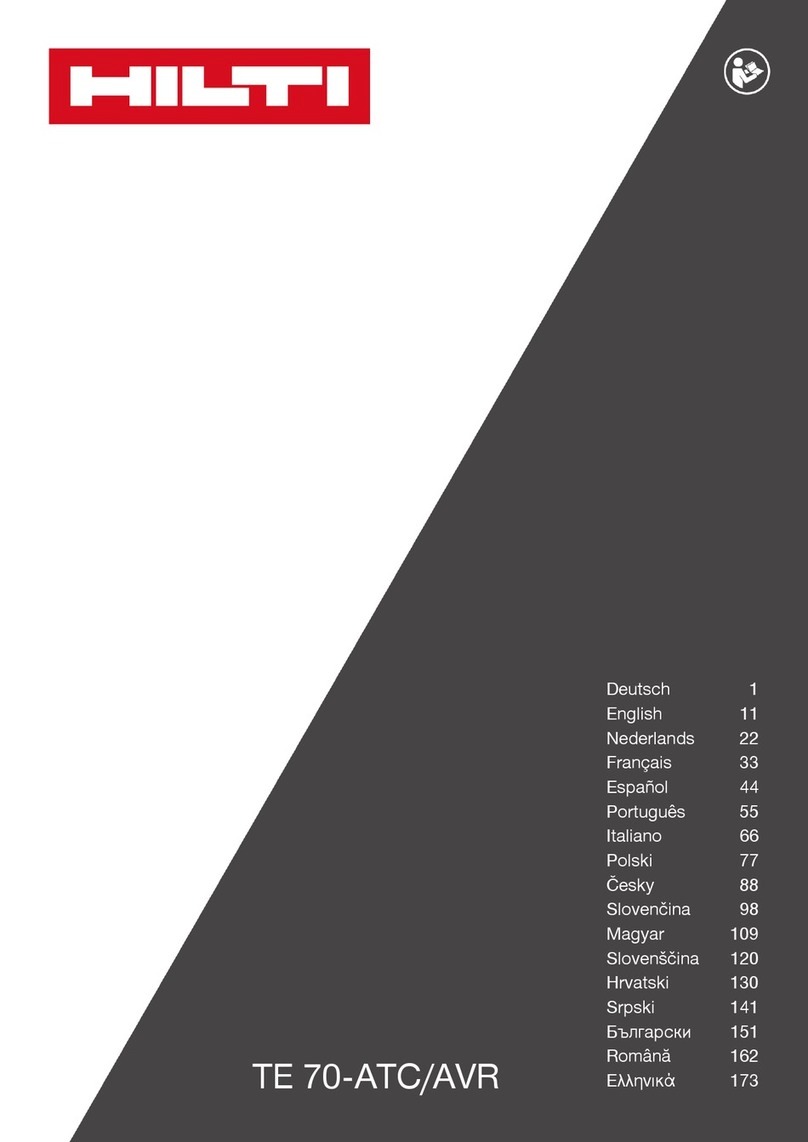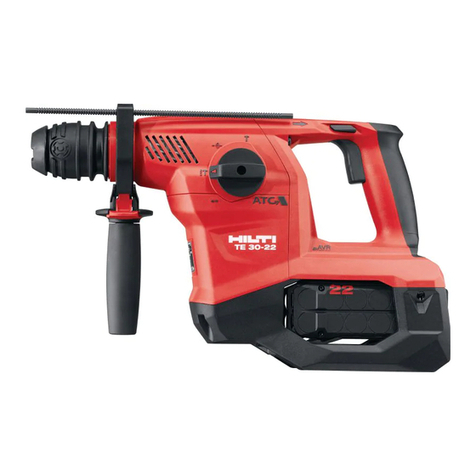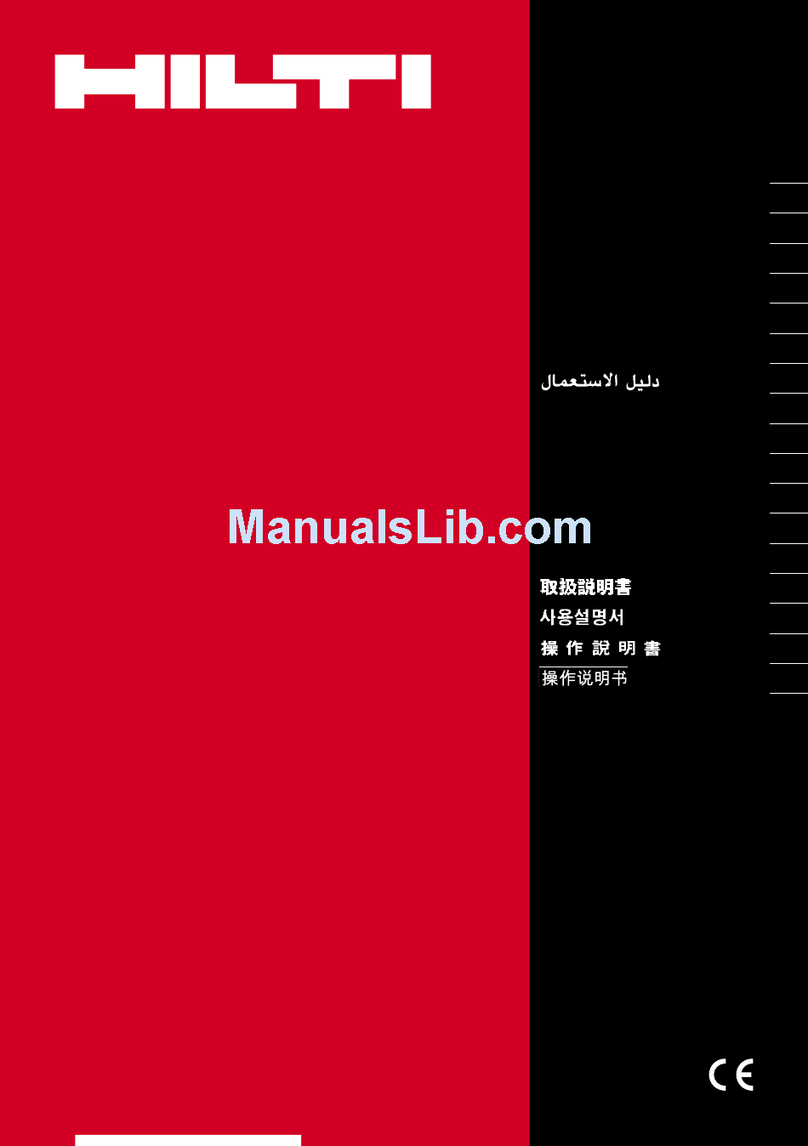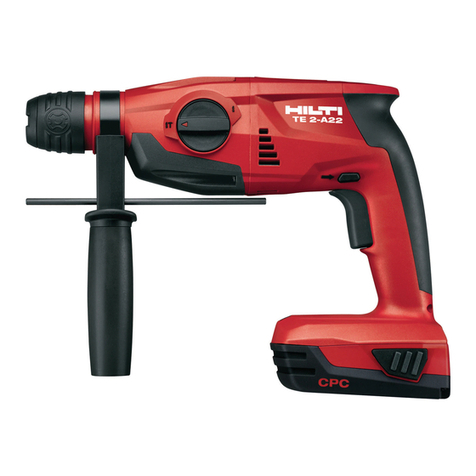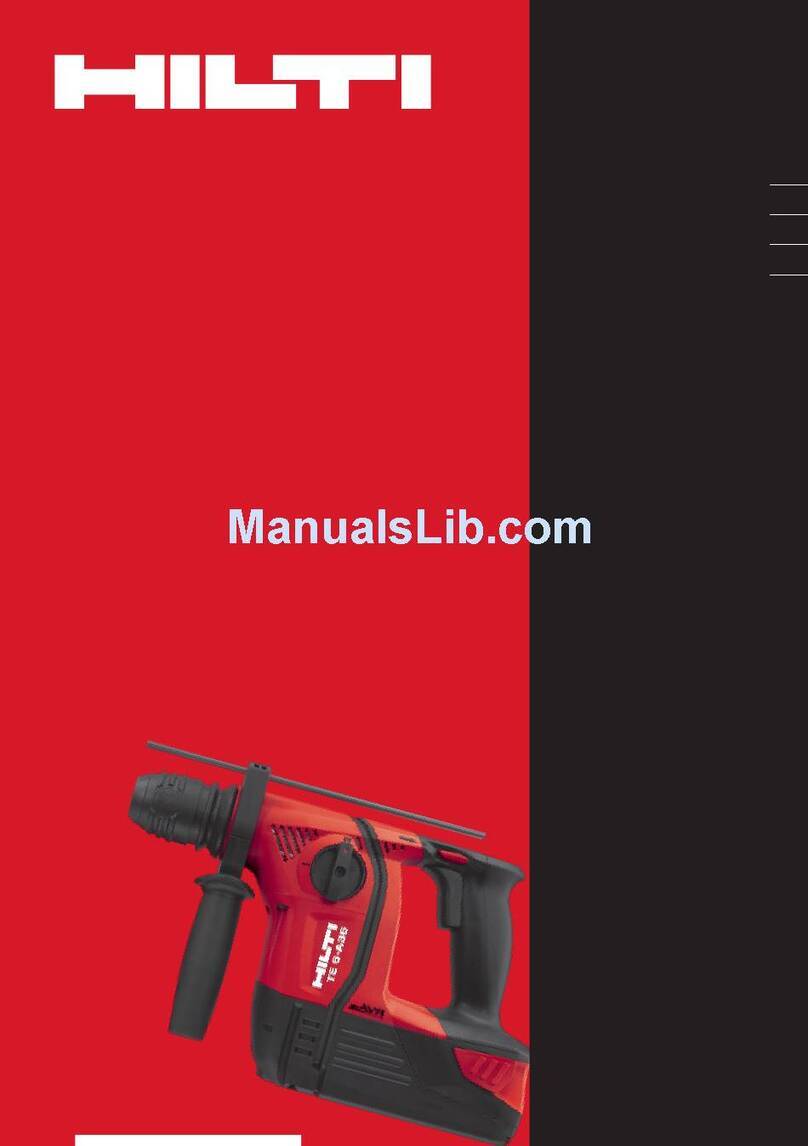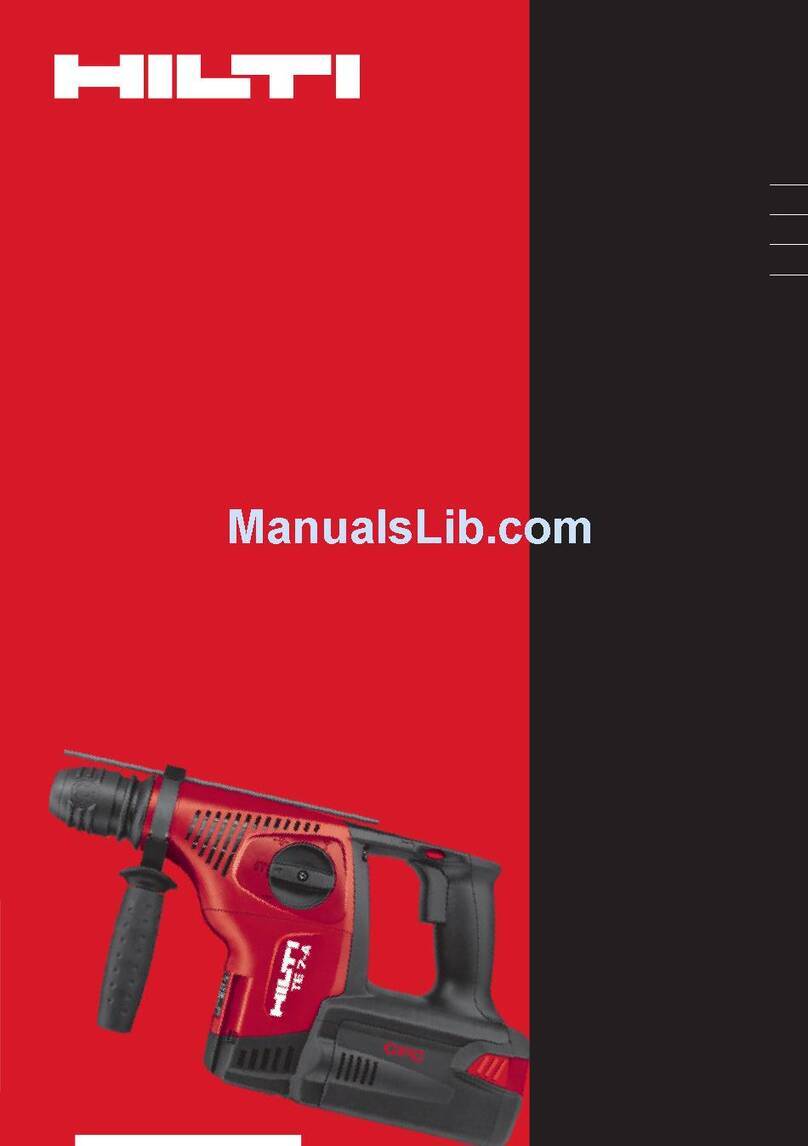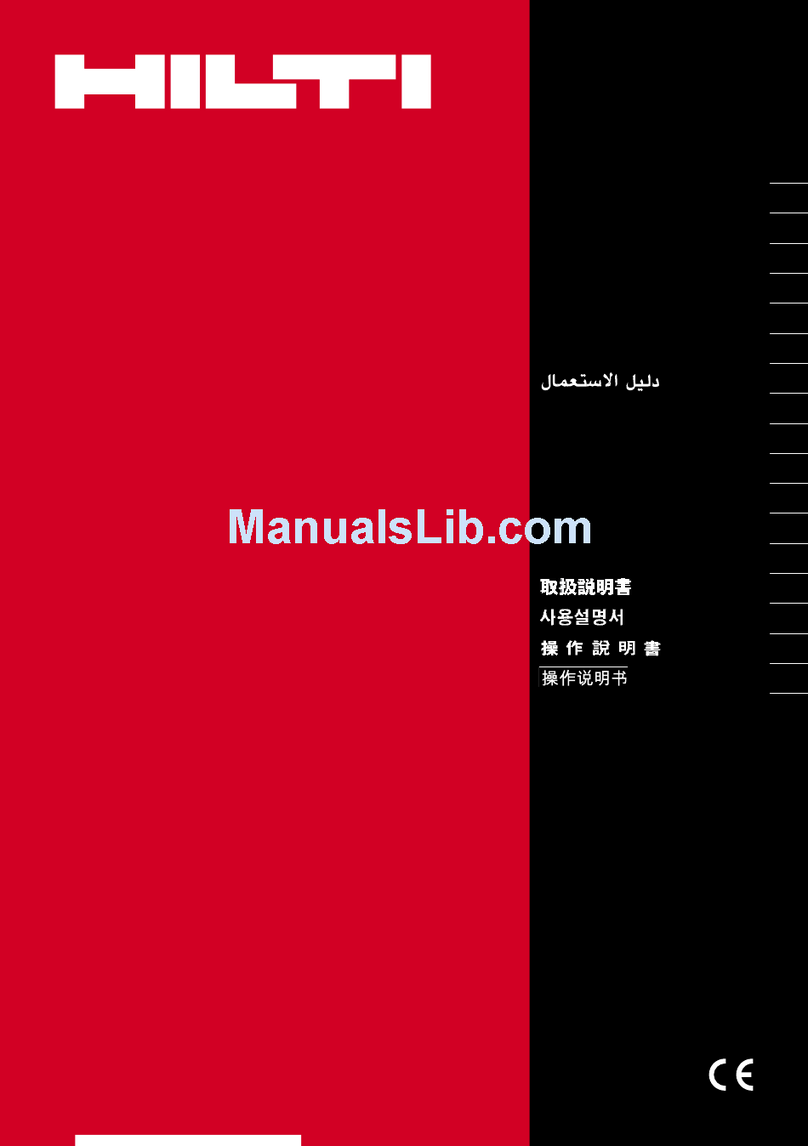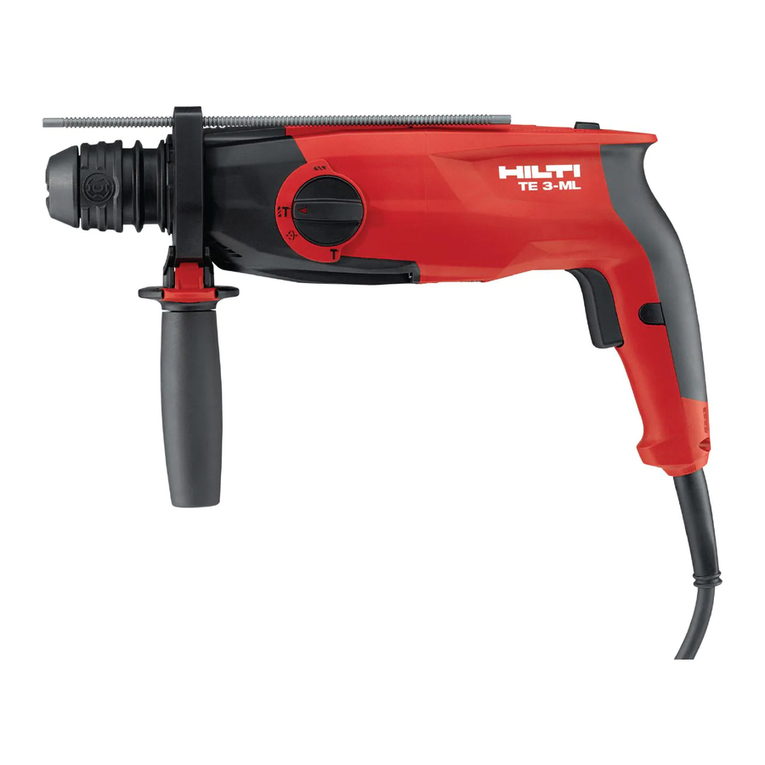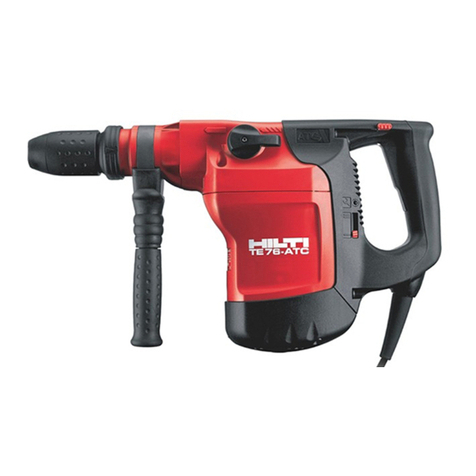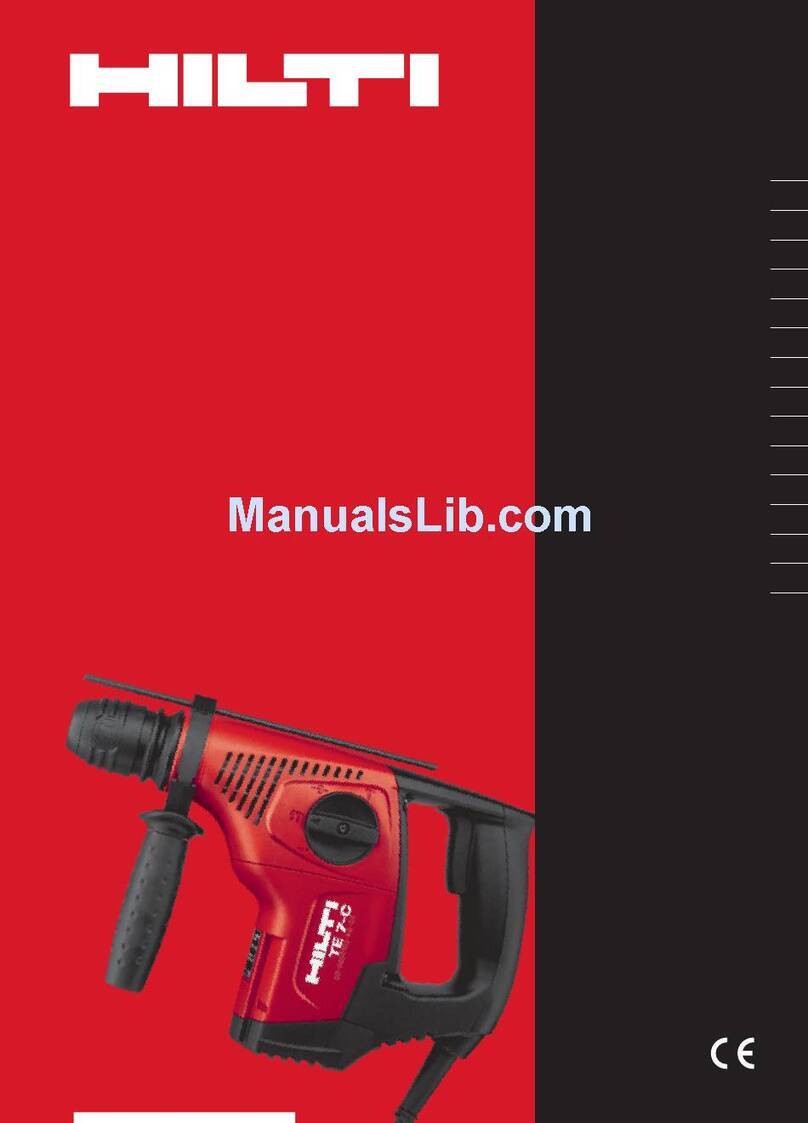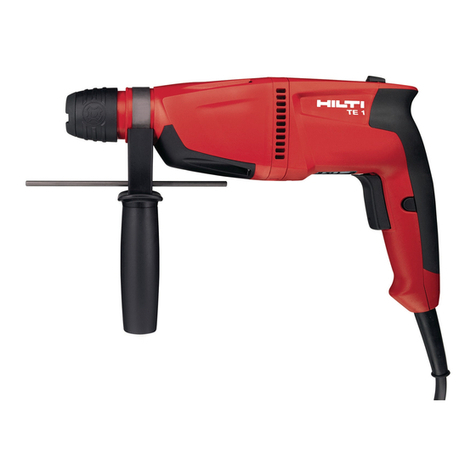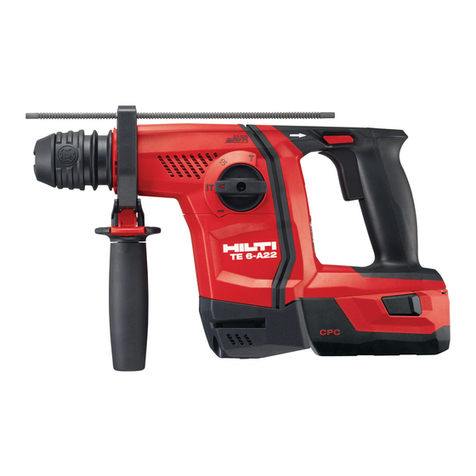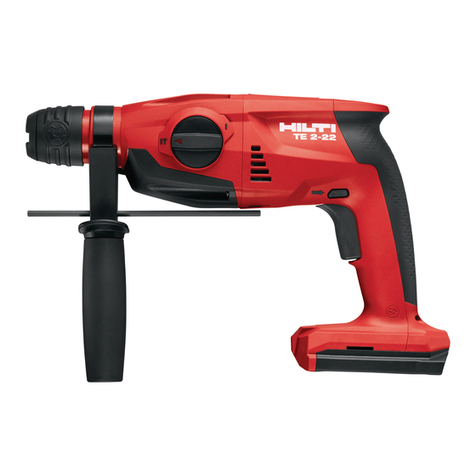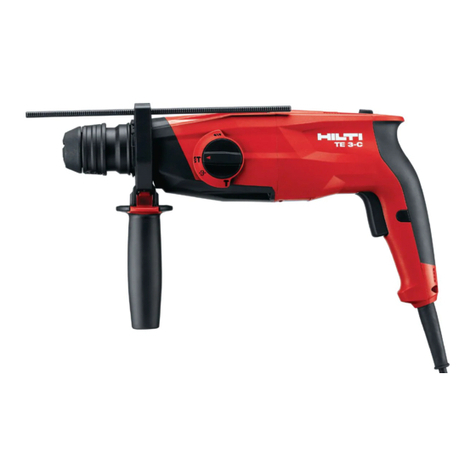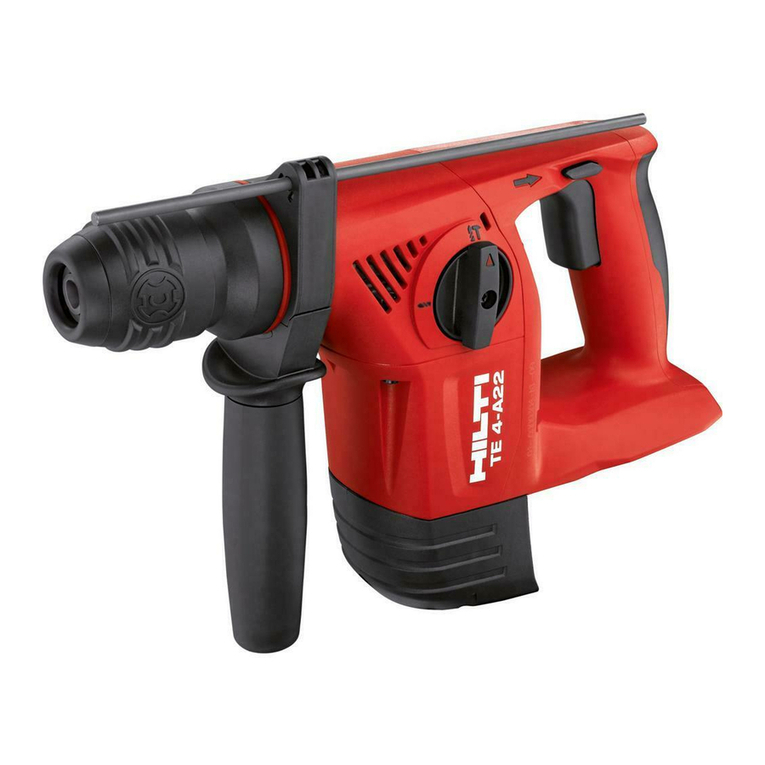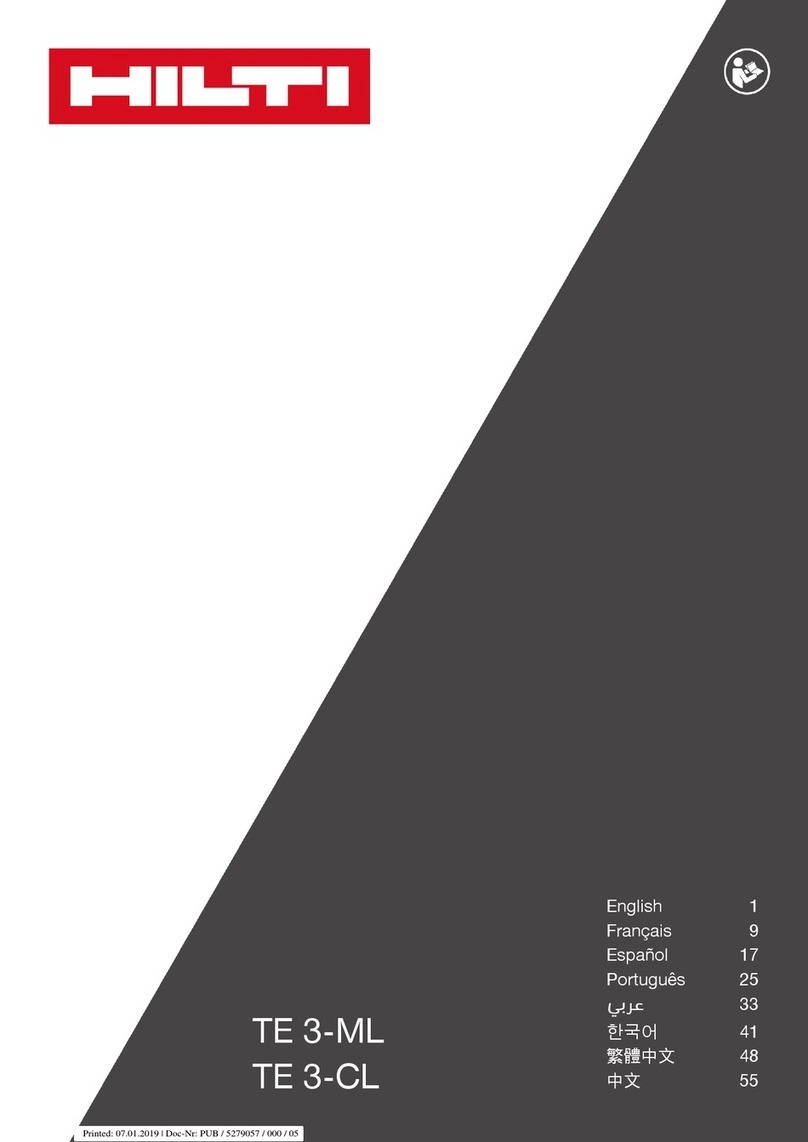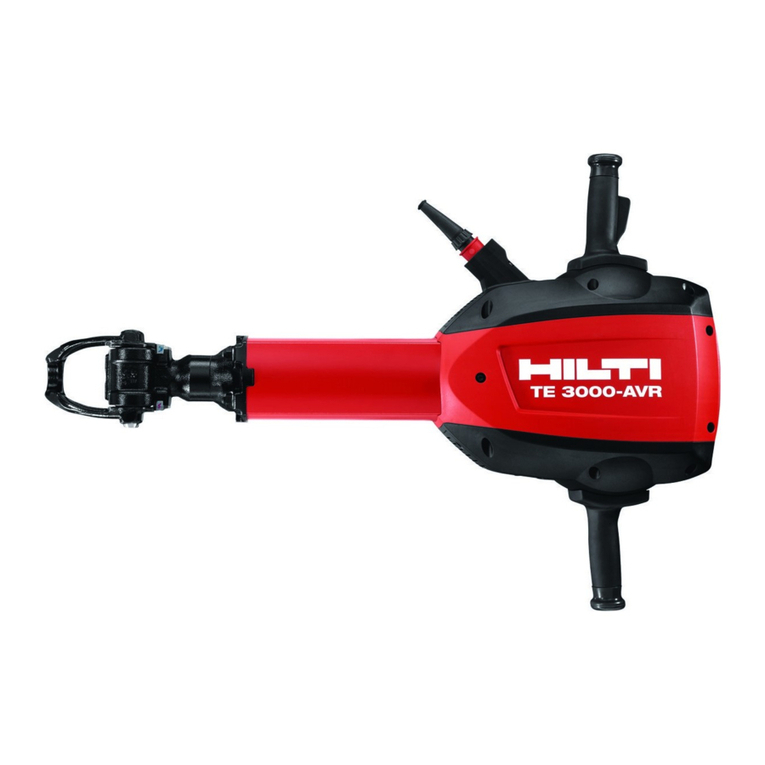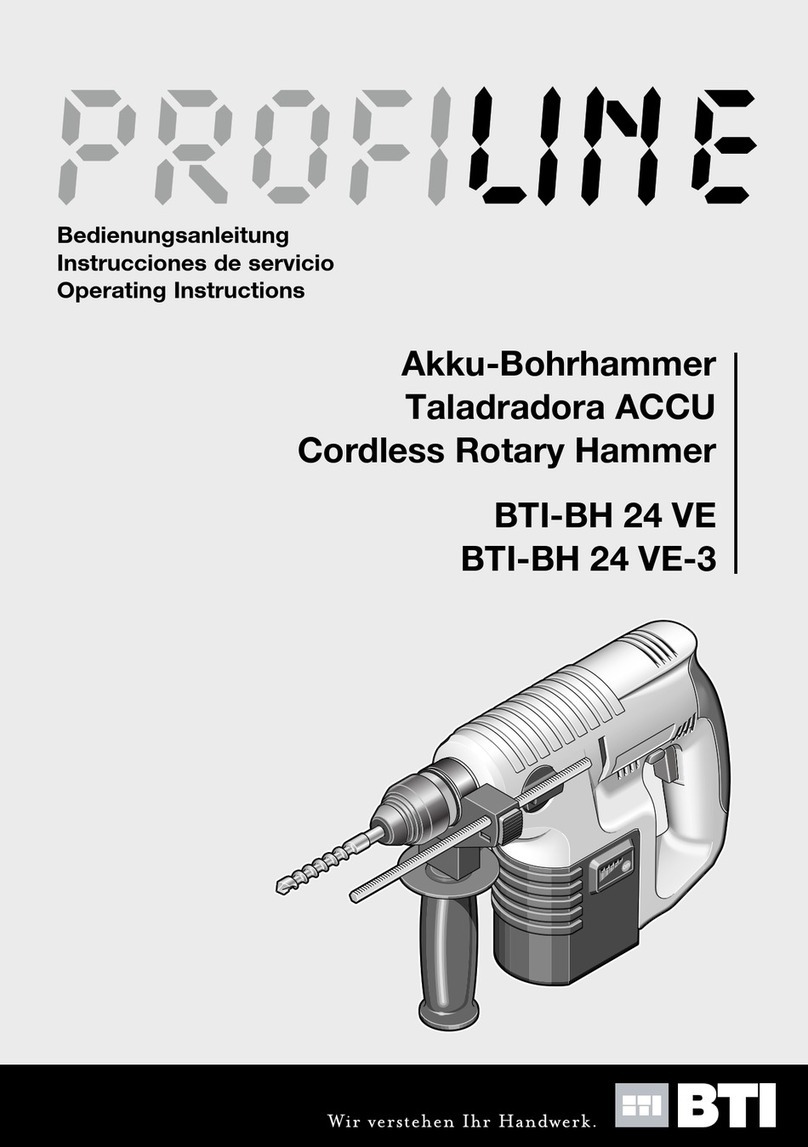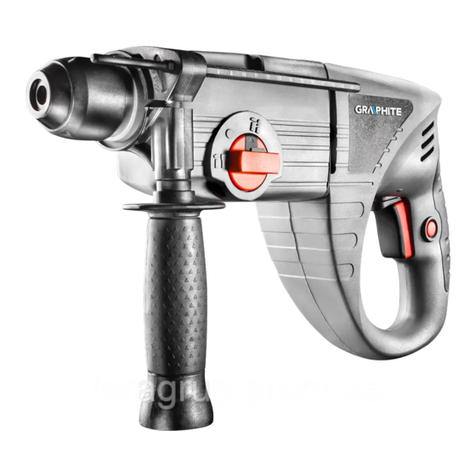
away from moving parts. Loose clothes, jewellery
or long hair can be caught in moving parts.
g) If devices are provided for the connection of dust
extraction and collection facilities, ensure these
are connected and properly used. Use of dust
collection can reduce dust-related hazards.
2.1.4 Power tool use and care
a) Do not force the power tool. Use the correct
power tool for your application. The correct power
tool will do the job better and safer at the rate for
which it was designed.
b) Do not use the power tool if the switch does not
turn it on and off. Any power tool that cannot be
controlled with the switch is dangerous and must be
repaired.
c) Disconnect the plug from the power source
and/or the battery pack from the power tool
before making any adjustments, changing
accessories, or storing power tools. Such
preventive safety measures reduce the risk of
starting the power tool accidentally.
d) Store idle power tools out of the reach of chil-
dren and do not allow persons unfamiliar with the
power tool or these instructions to operate the
power tool. Power tools are dangerous in the hands
of untrained users.
e) Maintain power tools. Check for misalignment or
binding of moving parts, breakage of parts and
any other condition that may affect the power
tool’s operation. If damaged, have the power tool
repaired before use. Many accidents are caused by
poorly maintained power tools.
f) Keep cutting tools sharp and clean. Properly main-
tained cutting tools with sharp cutting edges are less
likely to bind and are easier to control.
g) Use the power tool, accessories and tool bits etc.
in accordance with these instructions, taking into
account the working conditions and the work to
be performed. Use of the power tool for opera-
tions different from those intended could result in a
hazardous situation.
2.1.5 Battery tool use and care
a) Recharge only with the charger specified by the
manufacturer. A charger that is suitable for one
type of battery pack may create a risk of fire when
used with another battery pack.
b) Use power tools only with specifically designated
battery packs. Use of any other battery packs may
create a risk of injury and fire.
c) When battery pack is not in use, keep it away
from other metal objects, like paper clips, coins,
keys, nails, screws or other small metal objects,
that can make a connection from one terminal to
another. Shorting the battery terminals together may
cause burns or a fire.
d) Under abusive conditions, liquid may be ejected
from the battery; avoid contact. If contact acci-
dentally occurs, flush with water. If liquid contacts
eyes, additionally seek medical help. Liquid ejec-
ted from the battery may cause irritation or burns.
2.1.6 Service
a) Have your power tool serviced by a qualified repair
person using only identical replacement parts.
This will ensure that the safety of the power tool is
maintained.
2.2 Hammer safety warnings
a) Wear ear protectors. Exposure to noise can cause
hearing loss.
b) Use auxiliary handles, if supplied with the tool.
Loss of control can cause personal injury.
c) Hold power tool by insulated gripping surfaces,
when performing an operation where the cutting
accessory may contact hidden wiring. Cutting ac-
cessory contacting a "live" wire may make exposed
metal parts of the power tool "live" and could give
the operator an electric shock.
2.3 Additional safety rules
2.3.1 Personal safety
a) Modification of the machine or tampering with its
parts is not permissible.
b) Always hold the power tool securely with both
hands on the grips provided. Keep the grips dry,
clean and free from oil and grease.
c) Improve the blood circulation in your fingers by
relaxing your hands and exercising your fingers
during breaks between working.
d) Avoid touching rotating parts. Switch the power
tool on only after bringing it into position at the
workpiece. Touching rotating parts, especially rotat-
ing insert tools, may lead to injury.
e) Activate the safety lock (forward / reverse switch
in the middle position) before storing or trans-
porting the power tool.
f) The appliance is not intended for use by debilit-
ated persons who have received no special train-
ing. Keep the appliance out of reach of children.
g) Dust from materials, such as paint containing lead,
some wood species, concrete / masonry / stone con-
taining silica, and minerals as well as metal, may be
harmful. Contact with or inhalation of the dust may
cause allergic reactions and/or respiratory or other
diseases to the operator or bystanders. Certain kinds
of dust are classified as carcinogenic such as oak and
beech dust, especially in conjunction with additives
for wood conditioning (chromate, wood preservative).
Material containing asbestos must only be treated by
specialists. Where the use of a dust-extraction
device is possible it shall be used. To achieve a
high level of dust collection, use a suitable dust
extractor. When indicated wear a respirator ap-
propriate for the type of dust generated. Ensure
that the workplace is well ventilated. Follow na-
tional requirements for the materials you want to
work with.
h) If the work involves breaking right through, take
the appropriate safety measures at the opposite
side. Parts breaking away could fall out and / or fall
down and injure other persons.
en
3
Printed: 28.05.2015 | Doc-Nr: PUB / 5200364 / 000 / 02

